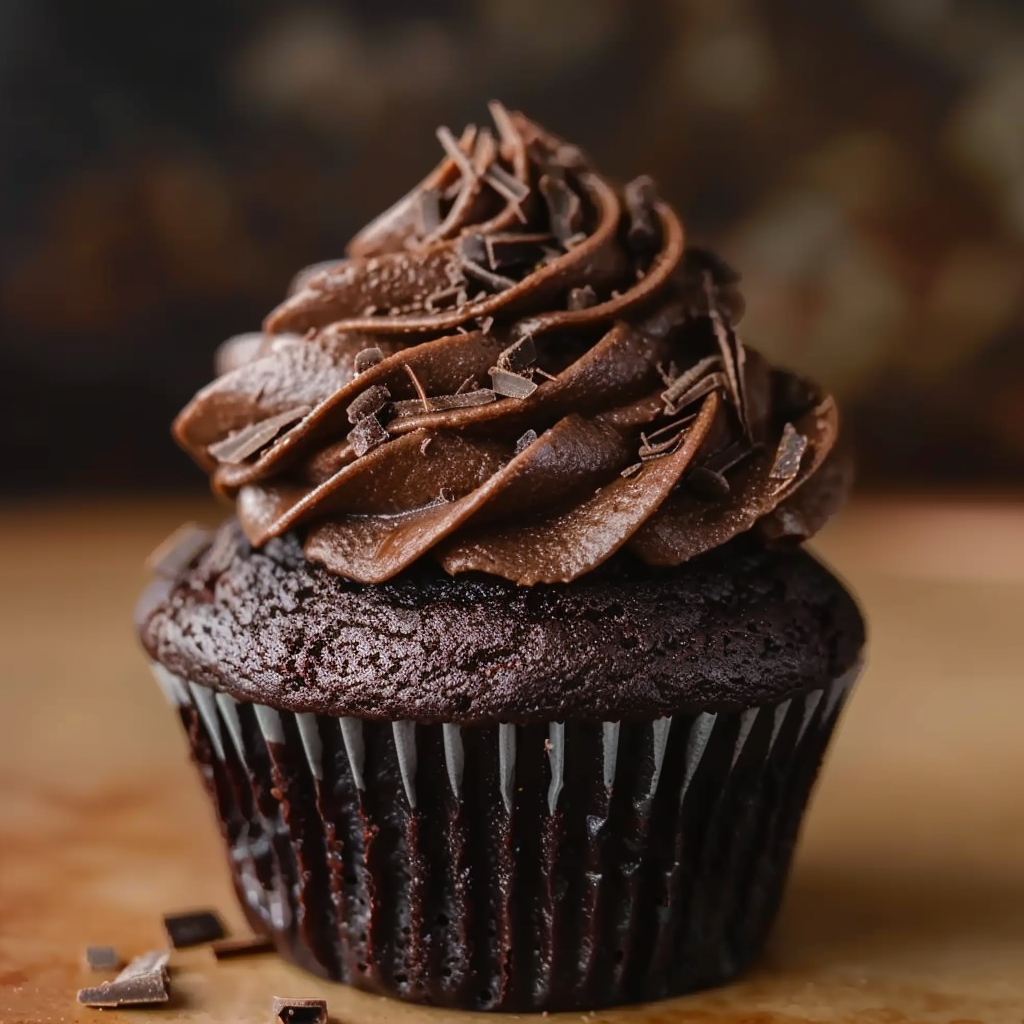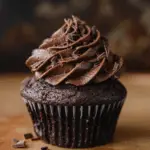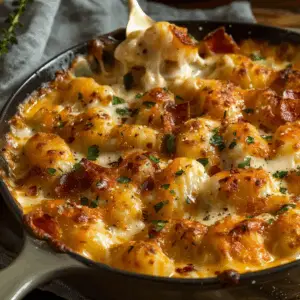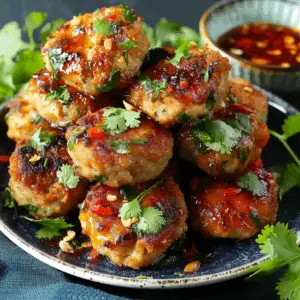Perfect Chocolate Cupcake
Few desserts capture the heart quite like a rich, moist chocolate cupcake. Their simplicity, indulgent flavor, and individual size make them the go-to treat for birthdays, holidays, or a quick chocolate fix. But not all chocolate cupcakes are created equal. While many recipes promise fluffiness, most fall short on consistent texture and deep chocolate flavor.
This easy homemade chocolate cupcake recipe delivers every time. It’s beginner-friendly yet bakes like a professional result—fluffy, moist, and perfectly domed. You don’t need fancy ingredients or equipment. Just a solid technique and quality cocoa powder lead to a better crumb, better lift, and better taste.
Unlike box mixes that often taste flat or overly sweet, this recipe achieves flavor balance with unsweetened cocoa powder and a touch of brown sugar for extra moisture. The secret? Simple ratios, properly combined. You’ll find that using ingredients like buttermilk and vegetable oil keeps the cupcakes incredibly soft without weighing them down. For example, buttermilk creates a tender crumb while reacting with the baking soda to add lift (learn more about buttermilk).
If you’re new to baking, this recipe is for you. And if you’re experienced, it may just become your go-to chocolate cupcake base. You’ll also learn the technique behind making a silky cocoa frosting that holds its shape beautifully—perfect for piping or spreading. Decorating tips and variations later in the article will help you get creative with minimal effort.
For more decorating inspiration, check out this collection of chocolate cupcake decoration ideas. Whether you keep it classic or dress them up, this recipe gives you a reliable foundation.
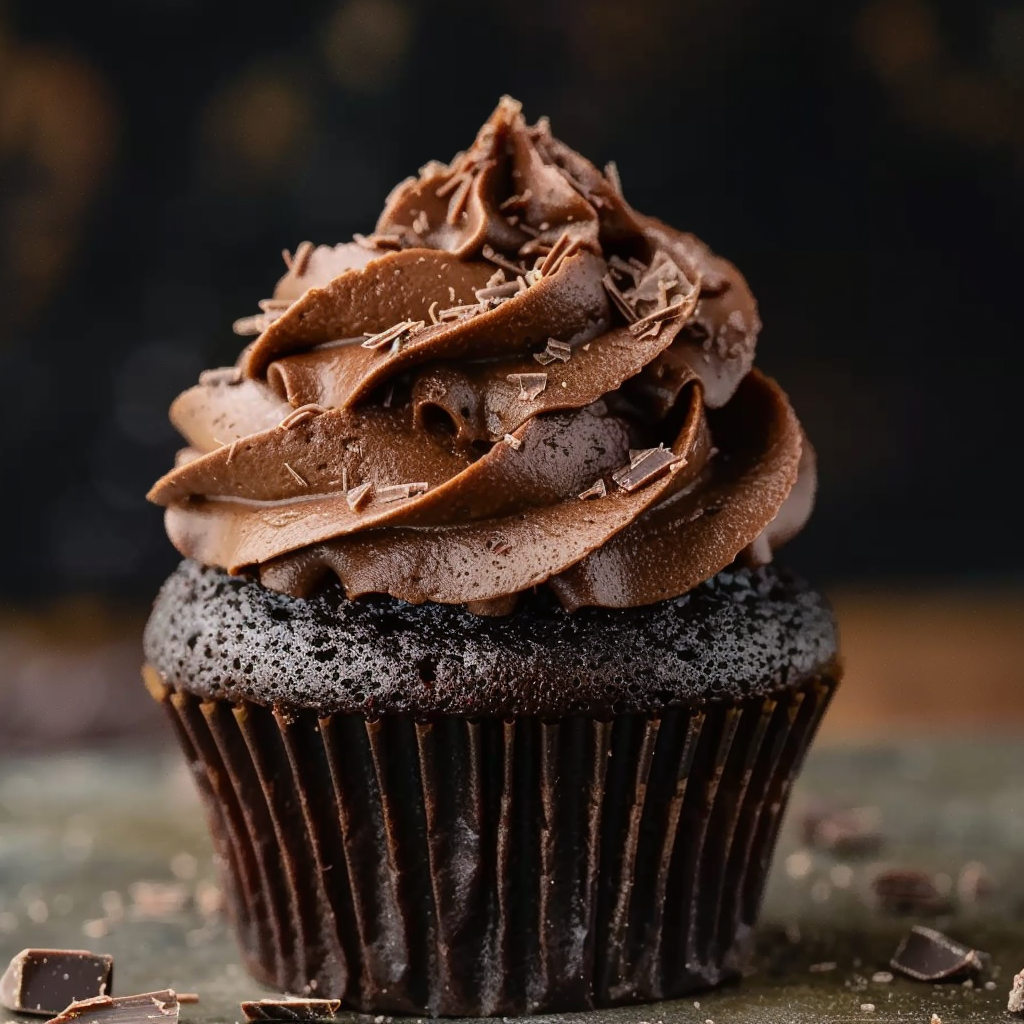
Why This Chocolate Cupcake Recipe Works
The success of this easy chocolate cupcake recipe lies in a smart combination of ingredients and technique. Every element has a purpose—creating balance between flavor, moisture, and structure. Let’s break down why this particular recipe produces consistently moist, fluffy, and rich cupcakes every time.
First, the choice of unsweetened cocoa powder brings depth and intensity without overwhelming sweetness. Using natural cocoa instead of Dutch-process allows the baking soda to react properly, helping the cupcakes rise with a tender crumb. This reaction is vital because the slight acidity in cocoa and buttermilk activates the leavening agents, producing a light, airy texture. Learn more about how baking soda works in baking from this source.
Another key factor is the use of both granulated sugar and brown sugar. Brown sugar contains molasses, which adds moisture and a subtle caramel note, while granulated sugar contributes to structure and sweetness. This dual-sugar approach is a strategic way to balance softness and stability in each bite.
Oil is used instead of butter in the cupcake base. While butter adds flavor, vegetable oil ensures a more uniformly moist texture because it remains liquid at room temperature. This is especially helpful for cupcakes that won’t be eaten immediately or need to stay soft for days. The oil also allows the chocolate flavor to stand out without interference.
Buttermilk is another MVP ingredient. Its acidity helps activate the leaveners and tenderizes the flour, resulting in cupcakes that are both soft and well-risen. You can explore the science of buttermilk’s effect on baked goods here.
Proper technique is just as important as ingredients. For example:
-
Alternating wet and dry ingredients while mixing helps avoid overdeveloping the gluten in flour, which keeps the crumb light and tender.
-
Mixing just until combined prevents toughness.
-
Filling liners two-thirds full ensures an even rise without overflow.
Finally, vanilla extract is the unsung hero that enhances the chocolate flavor rather than overpowering it. Learn more about why vanilla extract is a staple in baking from this link.
For bakers who want professional-looking cupcakes, this recipe has been tested to deliver evenly domed tops, perfect for frosting and decorating. Browse Pinterest’s cupcake frosting designs to see how beautifully these cupcakes can be finished.
In short, the ingredients are thoughtfully balanced:
-
Flour for structure (read about flour here)
-
Baking soda and baking powder for rise
-
Cocoa for rich flavor (cocoa powder explained)
-
Buttermilk and oil for moisture
-
Sugars for sweetness and softness
Each of these components works together to create cupcakes that are not only delicious but also easy to master, even on your first try.
Ingredients Breakdown: Cupcakes + Frosting
Understanding the role of each ingredient is key to mastering this cupcake recipe. Each component contributes to either structure, moisture, flavor, or consistency. Below is a breakdown of the cupcake and frosting ingredients and why they matter.
For the Cupcakes
-
1 cup all-purpose flour
Flour provides the structure needed to hold the cupcake together. Using all-purpose flour gives just the right balance of protein for strength without making the cupcakes dense. Learn more about all-purpose flour. -
1/2 cup unsweetened cocoa powder
This delivers deep chocolate flavor. Choose a natural unsweetened cocoa powder (not Dutch-processed) so it reacts with baking soda for proper lift. For a richer taste, sift before adding. See more on cocoa powder. -
3/4 tsp baking powder & 1/2 tsp baking soda
These leavening agents create a fluffy, risen texture. Baking soda needs acid (from the buttermilk) to activate, while baking powder provides extra lift. Combining both ensures evenly domed cupcakes. Explore baking powder and baking soda. -
1/4 tsp salt
Salt enhances all other flavors and balances the sweetness. -
2 large eggs
Eggs provide structure, stability, and richness. They also help bind the ingredients for an even crumb. -
1/2 cup granulated sugar + 1/2 cup packed brown sugar
Granulated sugar sweetens and structures the crumb. Brown sugar retains moisture and adds a slight molasses flavor, helping to create moist chocolate cupcakes. -
1/3 cup vegetable oil
Unlike butter, oil doesn’t solidify when cool. This keeps cupcakes soft and moist for longer. It also produces a finer crumb. Read more about butter vs. oil. -
2 tsp vanilla extract
Boosts the chocolate flavor and adds a warm, fragrant aroma. Don’t skip it—vanilla extract enhances the overall depth. Why vanilla matters. -
1/2 cup buttermilk
This is key for texture. Buttermilk reacts with baking soda and helps tenderize the flour, making each bite soft and fluffy. See how buttermilk affects baked goods.
For the Chocolate Frosting
-
1/2 cup unsalted butter, softened
Butter gives the frosting body and richness. It must be softened for smooth blending. Explore butter’s role. -
2/3 cup unsweetened cocoa powder
Just like in the cupcakes, unsweetened cocoa powder delivers chocolate flavor without added sweetness. Sifting helps prevent clumps and creates a smooth texture. -
3 cups powdered sugar
Also called confectioners’ sugar, this sweetens and thickens the frosting. Its fine texture helps create a silky consistency, ideal for piping. -
1/3 cup milk (plus more if needed)
Adjusts the consistency of the frosting. Add gradually for a spreadable or pipeable finish. -
1 tsp vanilla extract
Adds aroma and balances the chocolate intensity. Use pure extract for the best flavor.
This combination creates a frosting that’s not too sweet, deeply chocolatey, and perfectly fluffy and pipeable. If you need visual ideas, explore chocolate dessert inspiration on Pinterest.
The balance of fats (butter, oil), acids (buttermilk), and leaveners (baking soda, baking powder) is what makes these cupcakes successful for both new bakers and pros. When each ingredient is understood and used intentionally, it’s easy to produce fluffy, moist, homemade cupcakes with reliable results every time.
Step-by-Step Instructions
This easy chocolate cupcake recipe is designed to guide even novice bakers through a reliable and consistent baking process. Follow these steps closely to ensure each cupcake turns out moist, fluffy, and perfectly domed. Small techniques—like alternating ingredients and not overmixing—can make a big difference in the final texture.
Step 1: Prepare Your Oven and Pan
-
Preheat your oven to 350°F (175°C).
-
Line a 12-cup muffin tin with paper cupcake liners. This helps with easy release and even baking.
Step 2: Mix the Dry Ingredients
-
In a medium mixing bowl, sift together the following:
-
1 cup all-purpose flour
-
1/2 cup unsweetened cocoa powder
-
3/4 tsp baking powder
-
1/2 tsp baking soda
-
1/4 tsp salt
-
Sifting helps remove lumps (especially from cocoa) and evenly distributes the leavening agents for uniform rise. You can learn more about how flour and cocoa powder interact in baking from this Wikipedia article on cocoa solids.
Step 3: Combine Wet Ingredients
In a large mixing bowl, whisk the following until smooth:
-
2 large eggs
-
1/2 cup granulated sugar
-
1/2 cup packed brown sugar
-
1/3 cup vegetable oil
-
2 tsp vanilla extract
The combination of two sugars here helps build both structure and moisture. Brown sugar, in particular, enhances softness—making these cupcakes perfect for those who prefer a tender bite.
Step 4: Add Dry Ingredients and Buttermilk
-
Gradually add the dry mixture to the wet mixture in three additions, alternating with:
-
1/2 cup buttermilk
-
Start and end with the dry ingredients:
-
Dry → Mix lightly
-
Buttermilk → Mix
-
Dry → Mix
-
Buttermilk → Mix
-
Final Dry → Mix just until combined
This method helps prevent overmixing, which can lead to dense cupcakes. It also allows the buttermilk to react gradually with the leavening agents. If you’re curious about this reaction, learn more from this page on buttermilk’s role in baking.
Step 5: Fill and Bake
-
Evenly divide the batter into the prepared liners, filling each about 2/3 full. This allows room for the cupcakes to rise and dome without spilling over.
-
Bake for 18–20 minutes, or until a toothpick inserted into the center comes out clean or with just a few moist crumbs.
Avoid opening the oven door early, as this can cause the cupcakes to collapse.
Step 6: Cool Properly
-
Remove the pan from the oven and let the cupcakes cool in the tin for 5 minutes.
-
Transfer to a wire rack and let them cool completely before frosting.
Cooling on a rack allows air to circulate and prevents sogginess. This cooling step is important before frosting, or else the heat may melt your buttercream.
For beautifully presented results, explore cupcake frosting designs to get inspiration on how to frost once they’re ready.
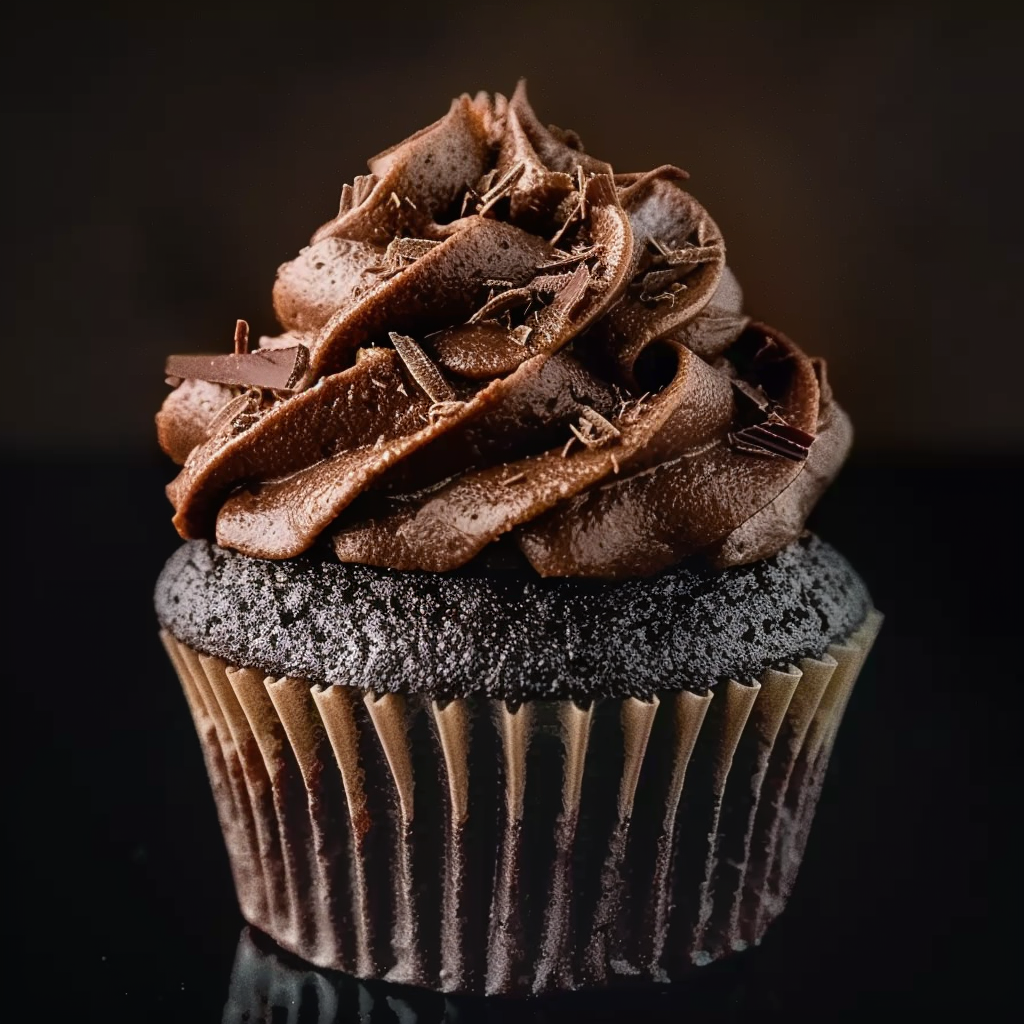
How to Make Cocoa Frosting Perfectly
The perfect chocolate cupcake frosting should be rich, smooth, and easy to work with—whether you’re piping high swirls or spreading it with a spatula. This cocoa buttercream is quick to make and pairs beautifully with the moist cupcake base.
Follow these steps to create a frosting that’s balanced in flavor and consistency.
Step 1: Cream the Butter
-
In a large bowl, beat 1/2 cup unsalted butter (softened to room temperature) using a hand mixer or stand mixer.
-
Beat on medium-high for 2–3 minutes, until the butter is light and creamy.
Creaming adds air and ensures the butter is smooth enough to mix well with the cocoa powder.
Step 2: Add Cocoa Powder
-
Add 2/3 cup unsweetened cocoa powder, sifted.
-
Mix on low speed until fully combined, then increase to medium and beat until smooth.
Sifting the cocoa helps eliminate lumps and gives a silky finish. Learn more about cocoa solids and how they influence flavor and texture.
Step 3: Incorporate Powdered Sugar and Milk
-
Gradually add 3 cups powdered sugar, alternating with:
-
1/3 cup milk (add more if needed for desired consistency)
-
Alternate additions help maintain a smooth texture and avoid a dry or overly stiff frosting. If piping, you may want it slightly thicker; if spreading, a touch more milk may help.
Powdered sugar adds volume and sweetness, while milk softens and loosens the frosting to a pipeable state. Use full-fat milk for best richness.
Step 4: Finish with Vanilla and Beat
-
Add 1 tsp vanilla extract.
-
Beat the frosting for 2–3 minutes, until light, fluffy, and easy to spread or pipe.
The final texture should hold its shape but still be smooth and creamy. For visual inspiration on cupcake finishes, visit chocolate dessert inspiration on Pinterest.
This frosting recipe makes enough to generously top 12 cupcakes. If you’d like taller swirls, consider doubling the frosting recipe.
Pro Tips for Moist, Fluffy Chocolate Cupcakes
Getting that ideal bakery-style cupcake—soft, fluffy, and not too sweet—is all about the right techniques. These tips will help make every batch a success.
-
Do not overmix: Once the flour is added, mix just until everything is combined. Overmixing develops gluten, which leads to dense cupcakes.
-
Use room temperature ingredients: Eggs, buttermilk, and butter mix better and create a uniform batter when not cold.
-
Check freshness of leaveners: Baking powder and baking soda lose potency over time. Fresh leaveners ensure proper rise.
-
Fill liners only two-thirds full: This prevents overflow and promotes even domes.
-
Bake in the center of the oven: Avoid top or bottom racks where heat is uneven.
-
Don’t open the oven door early: Opening before the cupcakes have set can cause them to collapse.
Consistently following these tips can elevate even the simplest recipe to a bakery-level result.
Troubleshooting Common Cupcake Issues
Even experienced bakers encounter problems. Here’s how to fix the most common cupcake mistakes:
-
Flat or sunken cupcakes
-
Cause: Overbeating, underbaking, or expired leaveners.
-
Fix: Mix just until combined and use fresh baking soda and powder.
-
-
Dry or crumbly texture
-
Cause: Overbaking or too much flour.
-
Fix: Use a timer, weigh your flour, and don’t pack it in the measuring cup.
-
-
Dense cupcakes
-
Cause: Cold ingredients or too much liquid.
-
Fix: Use room-temperature eggs and buttermilk. Measure accurately.
-
-
Sticky tops after cooling
-
Cause: Humidity or insufficient baking.
-
Fix: Cool completely on a wire rack and bake until a toothpick comes out clean.
-
-
Frosting too runny or too stiff
-
Cause: Incorrect milk-to-sugar ratio.
-
Fix: Add more powdered sugar if runny, or more milk if too thick.
-
Baking is part science, part art. Knowing how to correct these small issues gives you more control and confidence in the kitchen.
Flavor Variations and Add-ins
Once you’ve mastered the base recipe, try these easy upgrades to customize flavor without compromising texture.
-
Chocolate chips or chunks
Stir into the batter for gooey pockets of chocolate. -
Espresso powder
Add 1 tsp to intensify the chocolate flavor and create a mocha twist. -
Orange zest or raspberry puree
Fold into the batter or swirl into the frosting for fruity contrast. -
Peanut butter or Nutella center
Add a dollop before baking for a surprise filling. -
Spiced chocolate
A pinch of cinnamon or cayenne adds a bold touch.
These variations work well with the moist base and allow you to get creative without starting from scratch. They also make your cupcakes feel special for events or themed occasions.
Decorating and Serving Ideas
Presentation can take your cupcakes from homemade to bakery-worthy. Here are simple yet impactful ways to decorate:
-
Pipe tall swirls of frosting using a star or round piping tip.
-
Dust with cocoa powder or sprinkle mini chocolate chips on top.
-
Top with berries or edible flowers for color and freshness.
-
Add themed toppers for birthdays, holidays, or events.
-
Dip the frosted tops in chocolate ganache for a glossy finish.
Looking for visual inspiration? Browse cupcake frosting designs or decoration ideas to see how a little effort can elevate presentation.
Serve these cupcakes at room temperature, where the texture and flavor shine best.
Storing and Freezing Tips
Proper storage extends the freshness of your cupcakes and lets you prepare ahead for events.
Room Temperature Storage:
-
Store unfrosted or frosted cupcakes in an airtight container.
-
They stay fresh for 2–3 days at room temperature.
Refrigeration:
-
Frosted cupcakes can be stored in the fridge for up to 5 days.
-
Let them sit at room temperature for 30 minutes before serving to soften the buttercream.
Freezing:
-
Freeze cupcakes (unfrosted) wrapped tightly in plastic wrap, then stored in a zip bag for up to 2 months.
-
Frosting can be frozen separately in an airtight container.
-
Thaw overnight in the fridge or at room temperature for a few hours.
Planning to freeze frosted cupcakes? Flash freeze first on a tray, then wrap and store. This keeps the frosting intact.
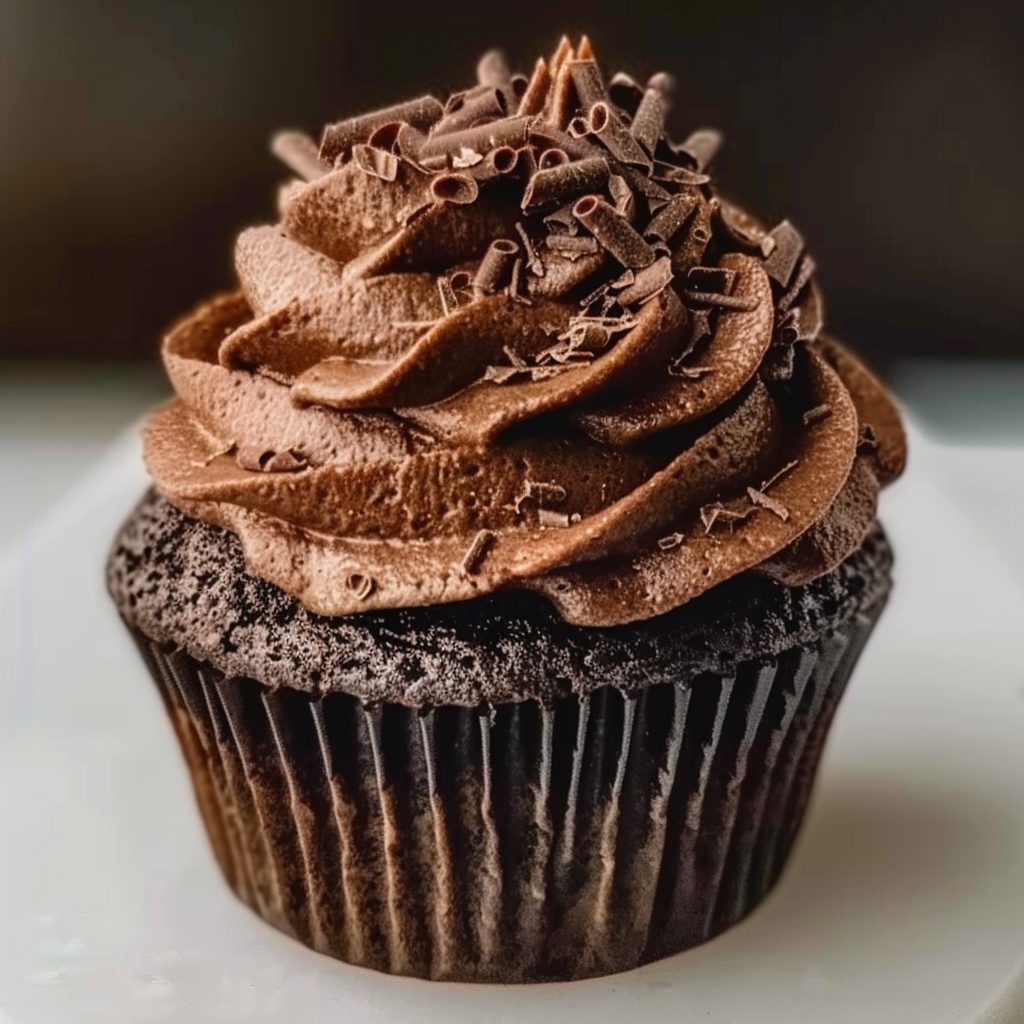
Frequently Asked Questions
What makes cupcakes light and fluffy?
Using room temperature ingredients, proper leavening, and avoiding overmixing are key. Ingredients like buttermilk and oil also help maintain moisture and light texture.
Can I use Dutch-process cocoa instead?
You can, but note that Dutch-process cocoa is alkalized and won’t react with baking soda. You’ll need to adjust the leavening balance or replace the baking soda with additional baking powder.
Why did my cupcakes sink after baking?
This often happens from overmixing, underbaking, or opening the oven door too early. Always test with a toothpick and mix the batter gently.
How do I make cupcakes more moist?
Use buttermilk, vegetable oil, and brown sugar for moisture. Avoid overbaking, and measure your dry ingredients properly.
What piping tip is best for frosting cupcakes?
A large closed star tip (like Wilton 2D) or an open star tip (like Wilton 1M) creates beautiful swirls. For visual examples, check out frosting design ideas on Pinterest.
Easy Chocolate Cupcake Recipe with Cocoa Frosting Tips
These homemade chocolate cupcakes are everything a cupcake should be: fluffy, moist, and packed with rich chocolate flavor. Made with cocoa powder, buttermilk, and oil, they come together in under an hour and are topped with a dreamy cocoa buttercream frosting. Perfect for birthdays, bake sales, or anytime you need a reliable, delicious dessert.
This recipe yields 12 standard-sized cupcakes that hold their shape and stay soft for days. With just a few pantry staples and no mixer required for the batter, it’s ideal for both beginner and seasoned bakers. Frost them with a swirl or a smooth spread and finish with your favorite toppings.
- Author: Clara
Ingredients
For the cupcakes:
- 1 cup all-purpose flour
- 1/2 cup unsweetened cocoa powder
- 3/4 tsp baking powder
- 1/2 tsp baking soda
- 1/4 tsp salt
- 2 large eggs
- 1/2 cup granulated sugar
- 1/2 cup brown sugar, packed
- 1/3 cup vegetable oil
- 2 tsp vanilla extract
- 1/2 cup buttermilk
For the chocolate frosting:
- 1/2 cup unsalted butter, softened
- 2/3 cup unsweetened cocoa powder
- 3 cups powdered sugar
- 1/3 cup milk (plus more if needed)
- 1 tsp vanilla extract
Instructions
Preheat your oven to 350°F (175°C) and line a 12-cup muffin tin with cupcake liners.
In a medium bowl, sift together the flour, cocoa powder, baking powder, baking soda, and salt. Set aside.
In a large bowl, whisk the eggs, granulated sugar, brown sugar, oil, and vanilla until smooth and combined.
Gradually add the dry ingredients to the wet mixture, alternating with the buttermilk. Begin and end with the dry ingredients. Mix until just combined.
Divide the batter evenly among the cupcake liners, filling each about two-thirds full.
Bake for 18–20 minutes or until a toothpick inserted into the center comes out clean.
Let the cupcakes cool in the pan for 5 minutes, then transfer to a wire rack to cool completely.
To make the frosting, beat the butter until creamy. Add cocoa powder and mix until combined.
Gradually add powdered sugar, alternating with the milk, until the frosting reaches your desired consistency.
Mix in the vanilla extract. Beat the frosting until light and fluffy.
Once the cupcakes are completely cool, frost them using a piping bag or a spatula.
Notes
-
Buttermilk substitute: Mix 1/2 cup milk with 1/2 tbsp vinegar or lemon juice. Let sit for 5–10 minutes before using.
-
Use fresh leaveners: Old baking powder or baking soda can result in flat or dense cupcakes.
-
Frosting too thick or thin? Adjust with a teaspoon of milk or powdered sugar at a time.
-
Don’t skip the sifting: It ensures a smoother batter and frosting.
-
Want extra chocolate flavor? Add 1 tsp espresso powder to the batter.
